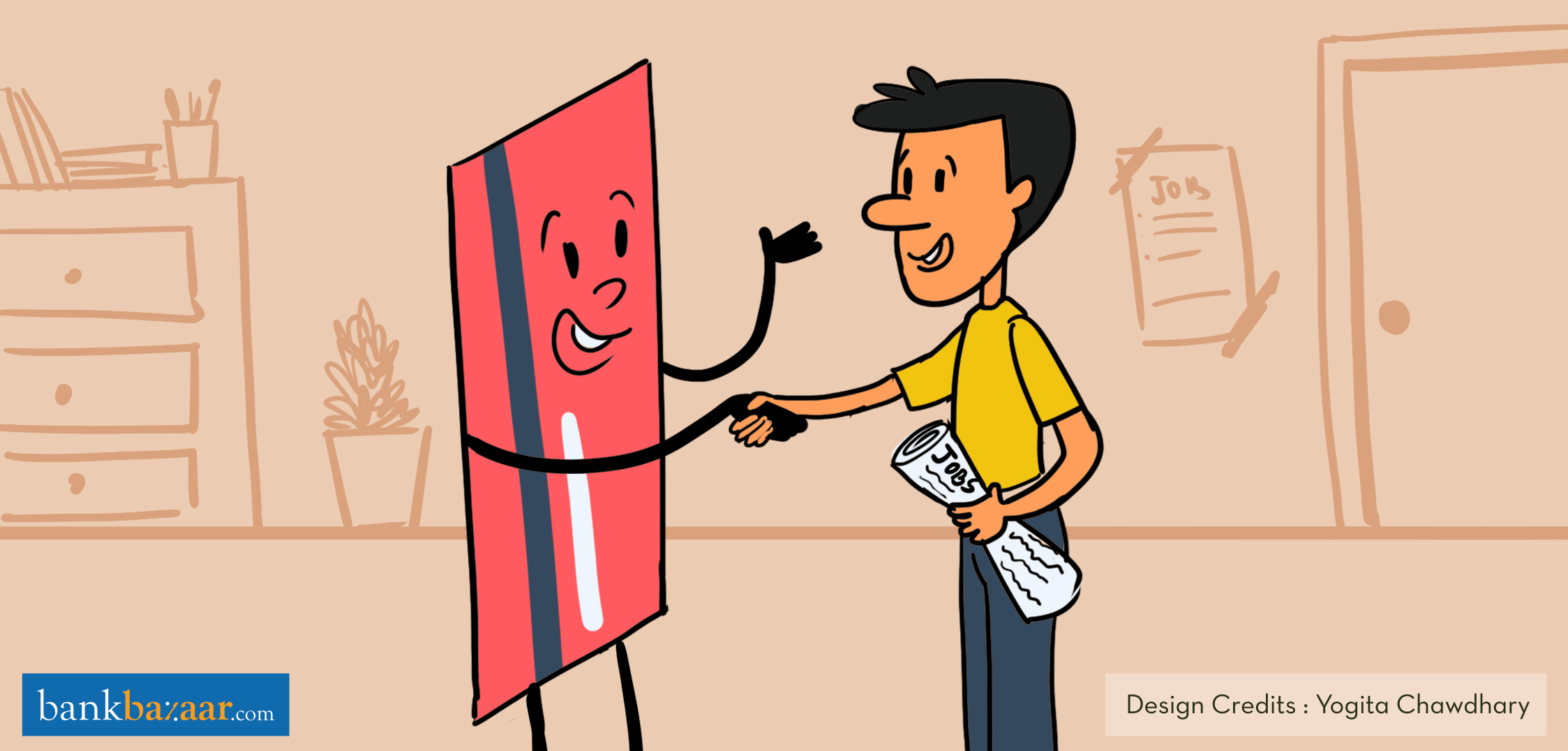It may not be easy getting a Credit Card if you’re unemployed/self-employed, but it isn’t impossible either. Let’s find out more.

The pandemic has resulted in unimaginable economic loss for many across the world. Loss of jobs, salary cuts and furloughs have left people without a stable income. This has created a pressing need for many to apply for loans and Credit Cards. During financial emergencies of this kind, we opt for a Credit Card as the main line of credit to help us get out of a bind. If you have a job, gaining approval for a Credit Card is much easier. This is because banks and Credit Card companies evaluate your income before issuing a Credit Card to you. Banks look at documented proof of income like salary statements, income tax return (ITR) records etc. at the time of evaluating your application.
But what happens when you don’t have a job? Would you still be able to get a Credit Card then? The answer is yes. While it may not be as easy to get one if you don’t have a job, it isn’t impossible either. You will still be able to get a Credit Card, albeit with some strings attached to it.
Let’s take a look at how someone who doesn’t have a steady flow of income can get a Credit Card:
-
Standard Credit Card: If you have proof of income from other sources
If you’re unemployed but receive income from other sources in your bank account, like dividends from Mutual Funds, professional fees, freelance work etc., you may be able to get a Credit Card from lenders who are willing to issue a Credit Card once they have verified all the necessary income-related documents like your bank statements or ITR records. Usually, lenders verify these documents to check the ability of the applicant to pay back their dues on time.
These days, applying for a Credit Card has never been easier. All you need to do is go online, research and compare across multiple lenders. However, if you’re unemployed and want to apply for a Credit Card, you may not be able to apply online.
Banks usually prefer that you visit the bank branch with the necessary documents and then apply for a standard Credit Card.
Additional Reading: 10 Feature-Loaded SBI Credit Cards For You
-
Secured Credit Card: If you have made investments in Fixed Deposits
One of the other options that you can avail is to get a secured Credit Card. Secured Credit Cards offer similar benefits as their regular counterparts but are issued against an individual’s Fixed Deposits. Credit limit offered on such cards range between 80-90 percent of the Fixed Deposit amount and cash withdrawal limit can be up to 100 percent.
Additional Reading: Key Highlights Of The Newly Launched HDFC Bank Freedom Credit Card
-
Add-On Credit Cards: If you neither have income proofs nor investments in Fixed Deposits
If you don’t have a job and do not receive income from other sources or don’t have investments in savings instruments like Fixed Deposits for example, the only way you can get a Credit Card is by opting for an add-on or supplementary Credit Card if someone in your family already has a primary/standard Credit Card. This can prove especially useful for homemakers and students.
So what is an add-on card? An add-on card is an additional card that Credit Card companies issue along with the primary Credit Card (standard or secured Credit Card). Credit Card companies usually issue these cards to the primary cardholder’s spouse, parents, siblings, and children who are above 18 years. In this case, the primary cardholder will share the credit limit with the add-on cardholder. Also, the Credit Card company will issue a single consolidated statement for all transactions made using both cards.
Additional Reading: How To Get A Higher Credit Limit?
Even for expenses incurred using the add-on card, the primary cardholder will earn the rewards. By the same token, the primary cardholder will have to pay off the expenses that other users make on the add-on card. Thus, the primary cardholder should keep a close watch on the transactions that the add-on card is incurring and ensure that the credit utilisation ratio does not breach the 30-40 percent mark of the total revolving credit available. Breaching this mark frequently will impact the Credit Score of the primary cardholder.
In most cases, Credit Card companies issue 4-5 add on Credit Cards for free. However, cardholders also have the option to add more Credit Cards to their primary card by paying the annual fee. Some banks also allow the primary cardholder to set a sub-limit on their add-on cards from the primary credit limit. You can do this by simply logging in to their website.
Final Thoughts:
While you still might be able to get a Credit Card if you don’t have a job, you would need to follow some Credit Card basics if you don’t want to end up in a debt trap. Mindful spending as well as paying your bills on time, paying the full bill amount and not just the minimum amount are pointers you need to bear in mind when using a Credit Card.
Low on cash and thinking of getting a Credit Card? You don’t have to step out of your home to avail one! Hit the button below to start exploring 100% safe and contactless KYC-enabled Credit Cards.